Menu
Math Lesson 15.7.3 - Transforming Graphs using the Parent Function Graph: Reflections
Please provide a rating, it takes seconds and helps us to keep this resource free for all to use
Welcome to our Math lesson on Transforming Graphs using the Parent Function Graph: Reflections, this is the third lesson of our suite of math lessons covering the topic of Transforming Graphs, you can find links to the other lessons within this tutorial and access additional Math learning resources below this lesson.
Transforming Graphs using the Parent Function Graph: Reflections
A reflection in mathematics involves a change in the position and orientation of an object but no change in size. Like in translations, our focus in this tutorial will be only on graphs' reflections, not on other mathematical objects. Again, we will deal only with the horizontal and vertical reflections. It is worth stating that in the popular language, reflections are also known as 'flips'. Look at the figure below.
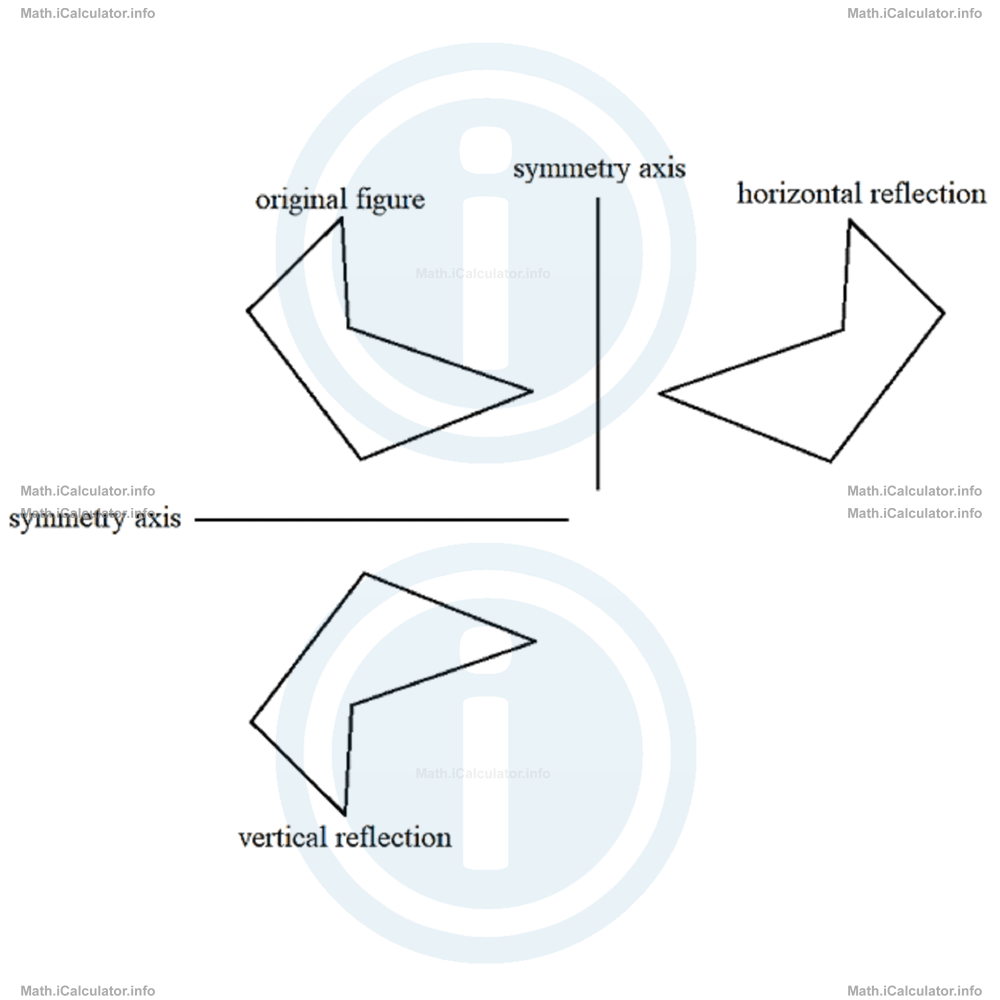
In more scientific terms, a reflection is a rigid transformation, which means that the size and shape of the figure do not change; the figures are congruent (have the same size and shape) before and after the transformation.
This tutorial is a kind of introduction to reflections though. We will deal more extensively with this concept after explaining vectors.
It is worth pointing out the fact that all reflections are made with respect to an axis of symmetry, as stated in previous tutorials. We will take the two axes of the coordinate system as symmetry axes in graphs' reflections.
Obviously, now it is clear what happens geometrically in reflections; however, here we are interested to know how to express mathematically the function obtained after a translation rather than dealing with figures. All figures (graphs) when used will have the only purpose to illustrate the algebra behind each translation.
Horizontal reflections
The first type of graphs reflection is the horizontal reflection. It occurs when a graph flips horizontally in respect to a vertical axis called a symmetry axis as stated above.
Mathematically, this type of transformation occurs when the function y = f(x) becomes y = f(-x). This means we have a horizontal reflection with respect to the vertical axis when f(x) → f(x). This occurs when we substitute the variable x with -x in the function's formula. The new function obtained represents therefore the reflection of the original function in the horizontal direction.
For example, the horizontal reflection of y = x is y = -x; that of y = x2 - 3x + 5 is y = (-x)2 - 3 · (-x) + 5 = x2 + 3x + 5, and so on. The following figure shows the graphs of the last two functions, y = x2 - 3x + 5 and y = x2 + 3x + 5 where the vertical axis acts as a symmetry axis.
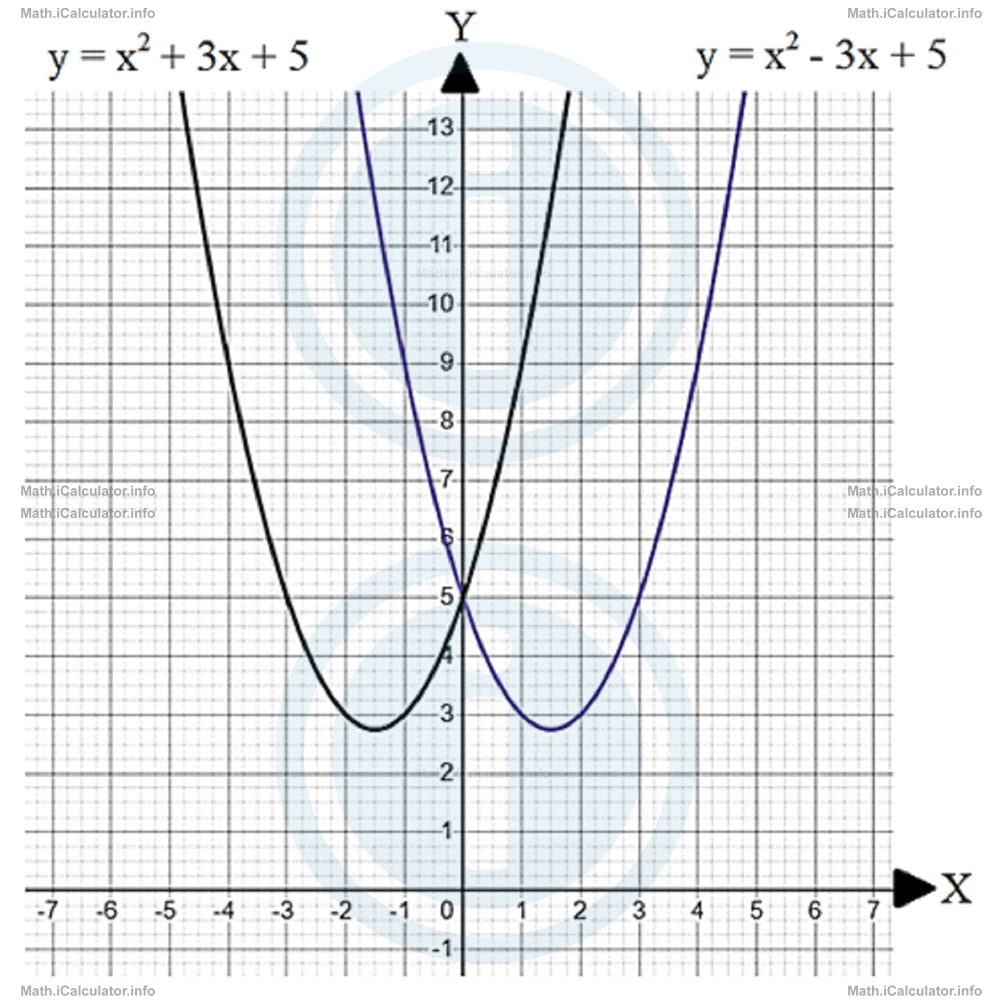
It is obvious that the reflection graph is obtained by flipping the original graph horizontally. In other words, in a horizontal reflection, you can fold the page according to the vertical axis to obtain the reflected function from the original one.
Example 6
Find the horizontal reflections of the following functions f(x) and then prove the results by plotting the two graphs on the same coordinate system.
- f(x) = 3x/x - 2
- f(x) = x3 - 3x2 - 5x + 2
- f(x) = 5 - 2x + ex
Solution 6
- We have f(x) = 3x/x - 2Thus,f(-x) = 3 ∙ (-x)/(-x) - 2Both functions are reciprocal as explained in tutorial 15.4. Therefore, both graphs will have hyperbola shapes. We can plot them by taking some values for the independent variable x and finding the corresponding y-values (not shown here). In this way, after joining smoothly the points obtained, this yields the following graphs.
= -3x/-x - 2
= -3x/-(x + 2)
= 3x/x + 2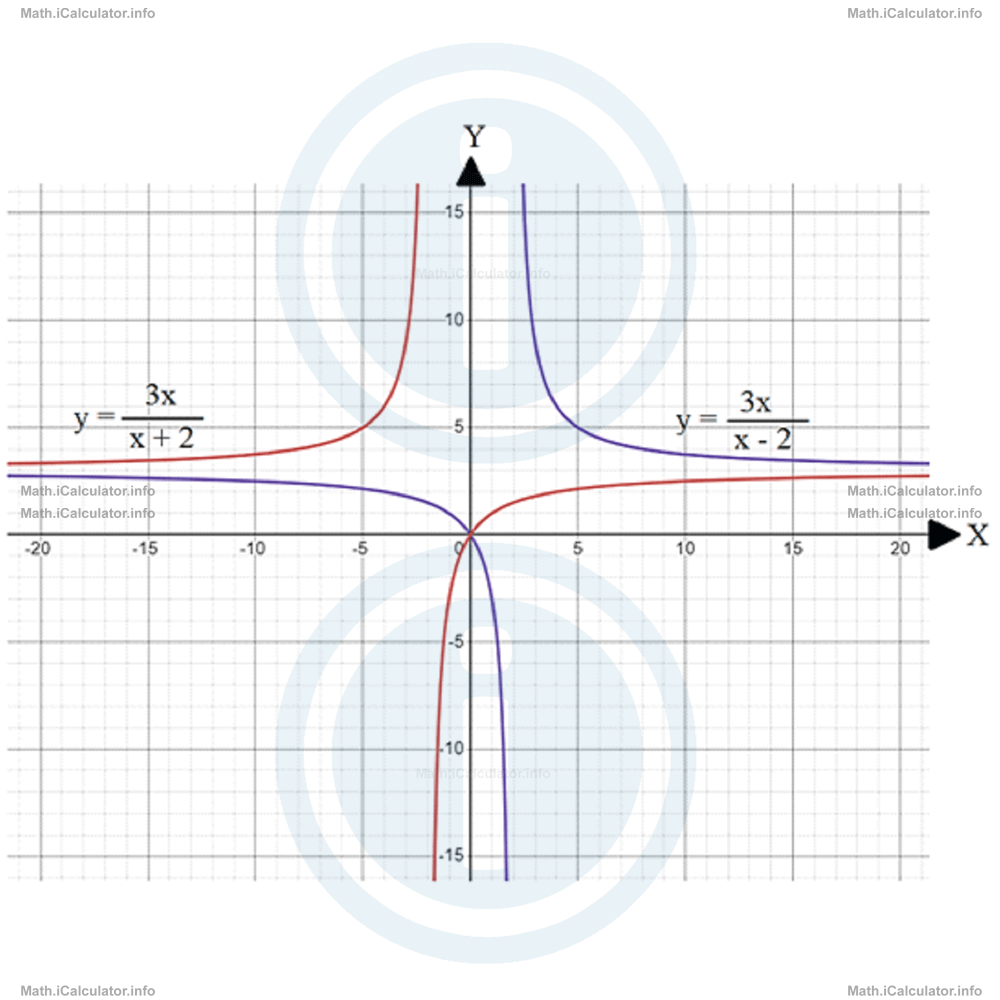 You can clearly see the horizontal symmetry between the two graphs, where the vertical axis is the symmetry axis for this transformation.
You can clearly see the horizontal symmetry between the two graphs, where the vertical axis is the symmetry axis for this transformation. - We have f(x) = x3 - 3x2 - 5x + 2Thus,f(-x) = (-x)3 - 3(-x)2 - 5 ∙ (-x) + 2The functions f(x) and f(-x) are both cubic. The graphs, therefore, are plotted by taking some values for the independent variable x and finding the corresponding y-values (not shown here). In this way, after joining smoothly the points obtained, this yields the following graphs.
= -x3 - 3x2 + 5x + 2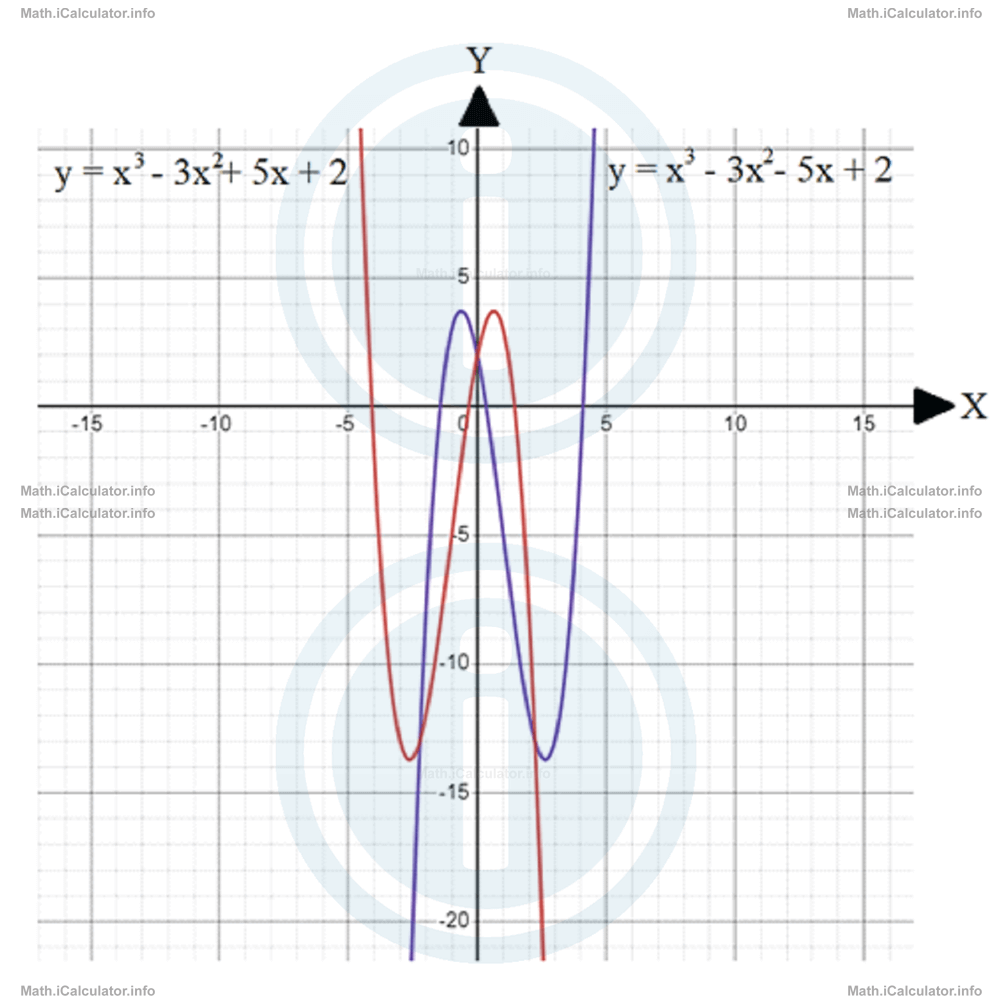 Again, you can clearly see the horizontal symmetry along the vertical axis occurring between the two graphs.
Again, you can clearly see the horizontal symmetry along the vertical axis occurring between the two graphs. - We have f(x) = 5 - 2x + exThus,f(-x) = 5 - 2 ∙ (-x) + e-xUsing the same procedure as described above to plot the graphs i.e. picking some x-values and finding the corresponding y-values to obtain some points on the graph (not shown here) and then connecting them smoothly, yields the following graphs.
= 5 + 2x + e-x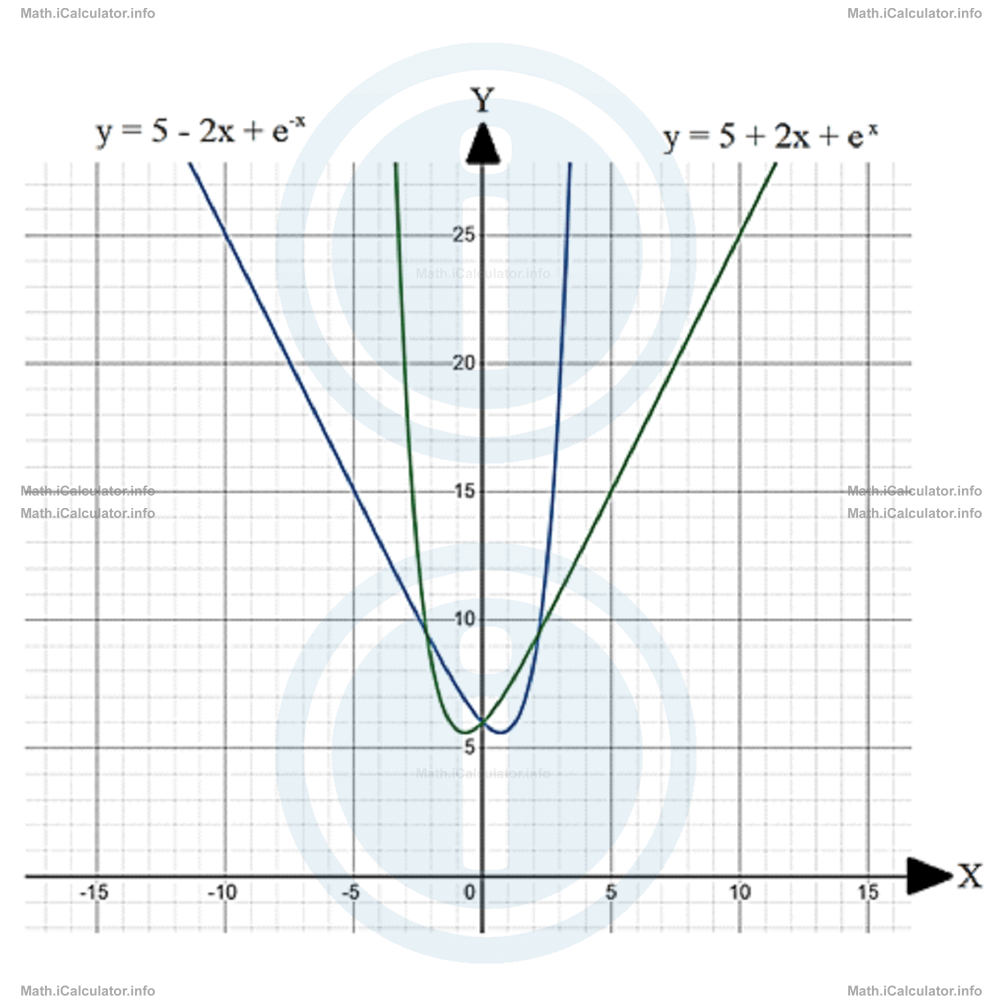 Again, it is easy to observe the horizontal symmetry of the two graphs in respect to the vertical axis.
Again, it is easy to observe the horizontal symmetry of the two graphs in respect to the vertical axis.
Vertical reflections
The second type of graphs reflection is the vertical reflection. It occurs when a graph flips vertically with respect to a horizontal axis called a symmetry axis.
Mathematically, this type of transformation occurs when the function y = f(x) becomes y = -f(x). This means we have a vertical reflection with respect to the vertical axis when f(x) → -f(x). This occurs when we place a negative sign before the function's formula. The new function obtained represents therefore the reflection of the original function in the vertical direction.
For example, the horizontal reflection of y = x is y = -x; that of y = x2 - x + 1 is y = -(x2 - x + 1) = -x2 + x - 1 and so on. The following figure shows the graphs of the last two functions, y = x2 - x + 1 and y = -x2 + x - 1 where the vertical axis acts as a symmetry axis.
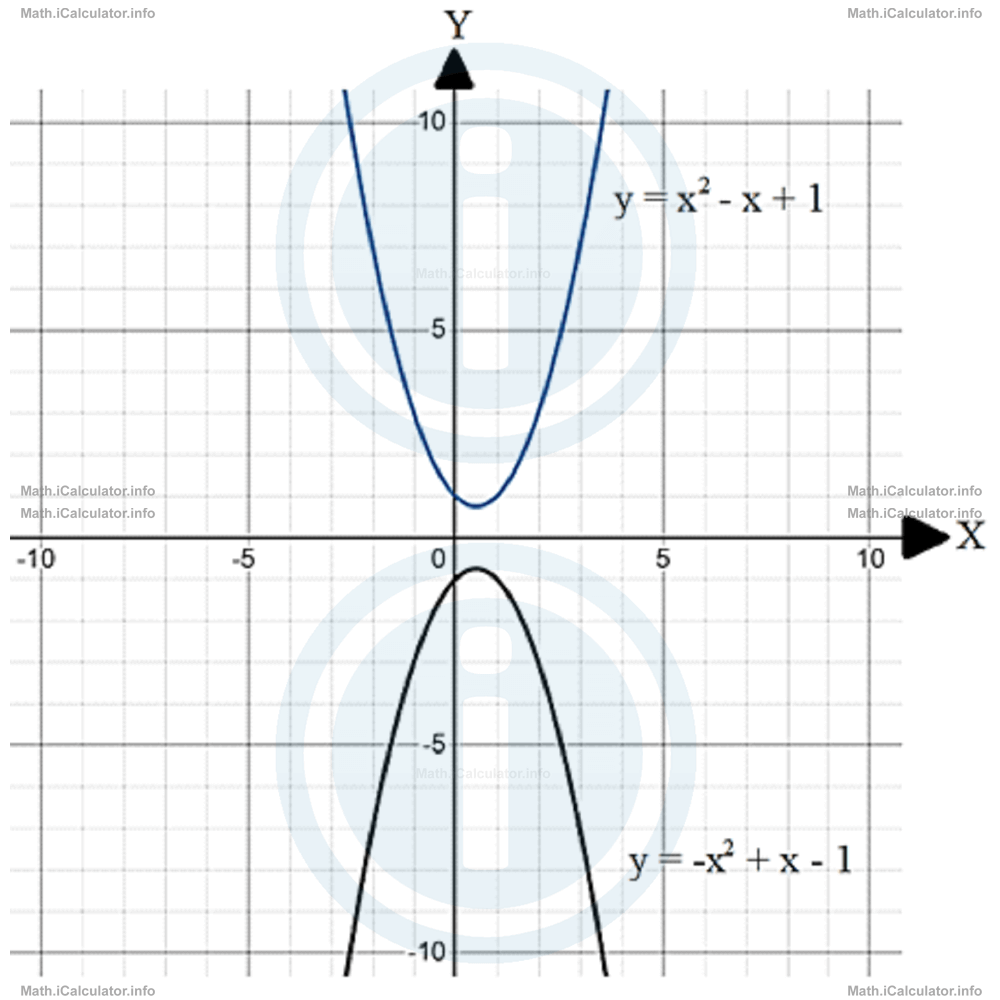
It is obvious that the reflection graph is obtained by flipping the original graph vertically. In other words, in a vertical reflection, you can fold the page according to the horizontal axis to obtain the reflected function from the original one.
Example 7
Find the horizontal reflections of the following functions f(x) and then prove the results by plotting the two graphs on the same coordinate system.
- y = 2 - 3x
- y = 4/1 - x
- y = ln2x
Solution 7
- We have f(x) = y = 2 - 3xThus,-f(x) = -(2 - 3x)Since we are dealing with linear graphs, we can plot the graphs of the two above functions by choosing two random points for the x-variable and finding the corresponding y-values. This procedure (not shown here) is done for each graph separately. In this way, we obtain the following figure.
= -2 + 3x
= 3x - 2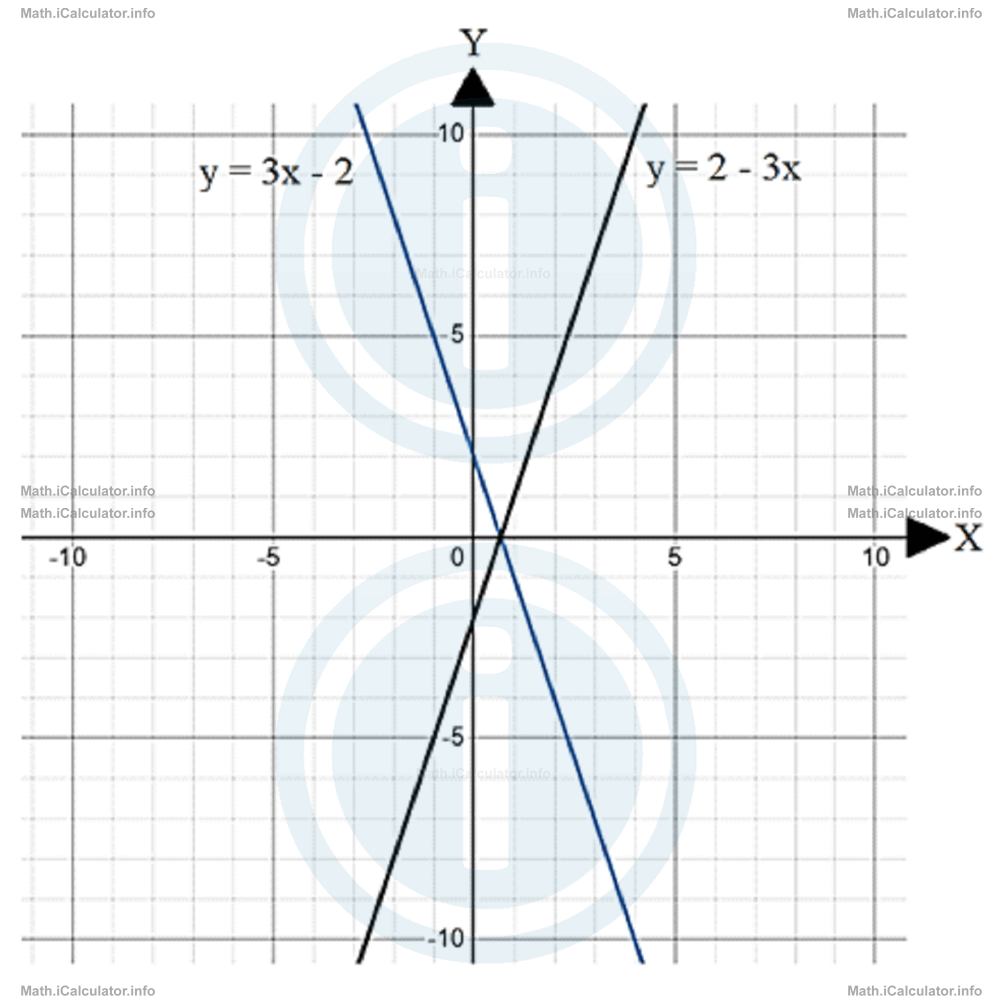 It is easy to observe the horizontal symmetry of the two graphs in respect to the vertical axis.
It is easy to observe the horizontal symmetry of the two graphs in respect to the vertical axis. - We have f(x) = y = 4/1 - xThus,-f(x) = -4/1 - xSince the functions are both reciprocal, they need a number of points (not shown here) to plot their graphs. In this way, we obtain the following figure.
= -4/1 - x
= -4/-x + 1
= -4/-(x - 1)
= 4/x - 1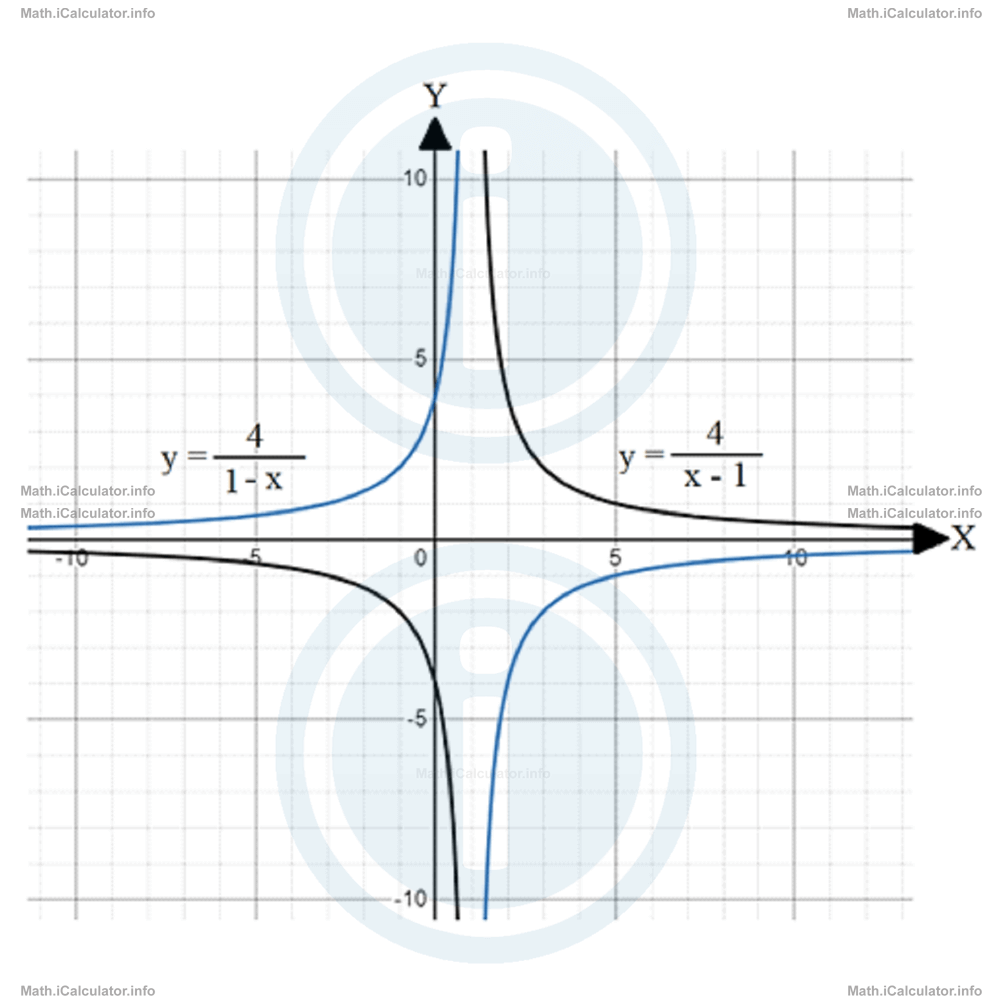 Again, it is easy to observe the horizontal symmetry of the two graphs in respect to the vertical axis.
Again, it is easy to observe the horizontal symmetry of the two graphs in respect to the vertical axis. - We have f(x) = y = ln 2xThus,f(x) = -ln 2xThe ln function needs choosing more than two x-values to plot the graph, as the ln graph is a kind of curve. Having done this (not shown here), yields the following figure.
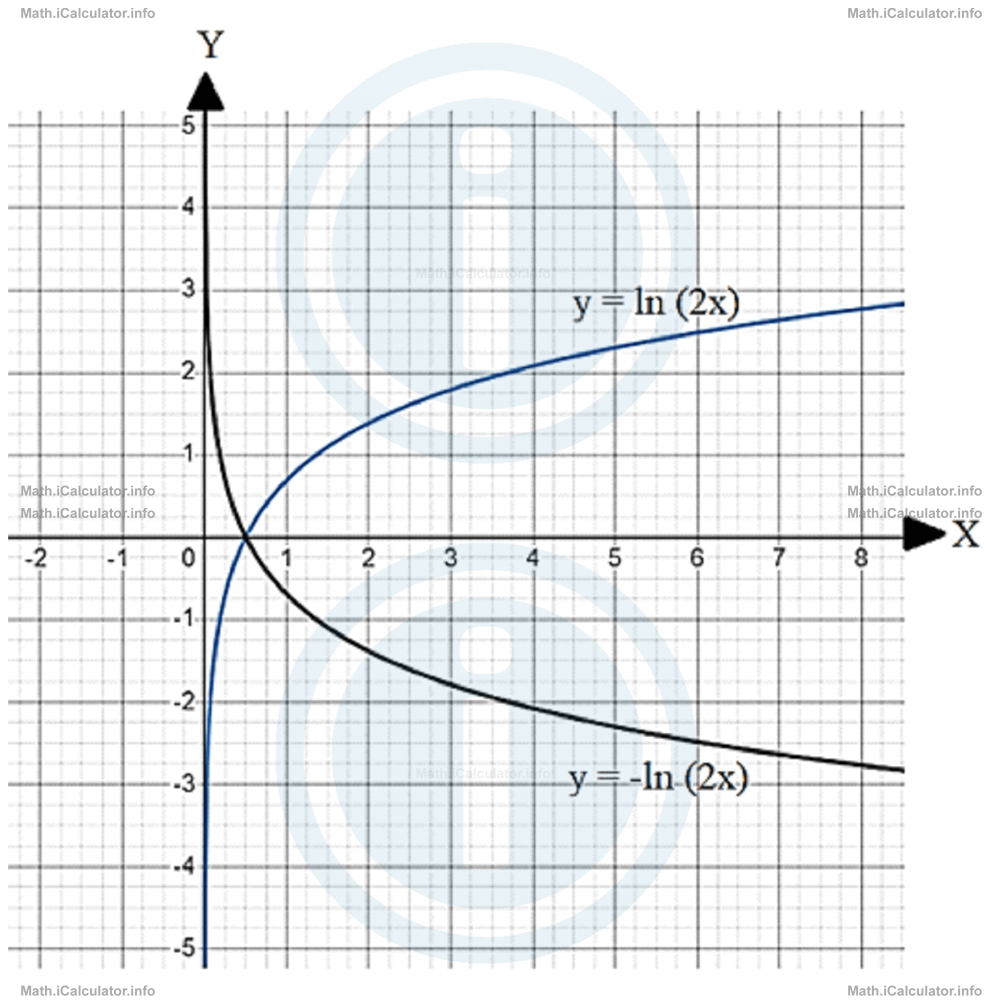 The horizontal symmetry of the two graphs in respect to the vertical axis is easy to observe in this case as well.
The horizontal symmetry of the two graphs in respect to the vertical axis is easy to observe in this case as well.
Combined Reflections
We may have both the above types of reflections applied in the same graph. This occurs when the function f(x) becomes -f(-x). Mathematically, we have f(x) → -f(-x). Obviously, the transformations are carried out one at a time, as in the graphs translations in the sense that first you can consider the horizontal reflection and then the vertical one or vice versa. Let's clarify this point through an example.
Example 8
- Write the formula of the double reflection (horizontal & vertical) graph for the function y = 2x - x - 1/x3
- Plot the two graphs in the same figure.
Solution 8
- We have f(x) = y = 2x - x - 1/x3Thus, for the vertical reflection, we have-f(x) = -(2x - x - 1/x3)and for the horizontal reflection (after having completed the vertical one) we have
= -2x + x - 1/x3
= x - 1/x3 -2x-f(-x) = (-x) - 1/(-x)3 - 2 · (-x)
= -x - 1/-x3 + 2x
= -(x + 1)/-x3 + 2x
= 2x + x + 1/x3 - The following figure shows the three graphs, where the transitional stage (the vertical reflection alone) is shown by the dashed line.
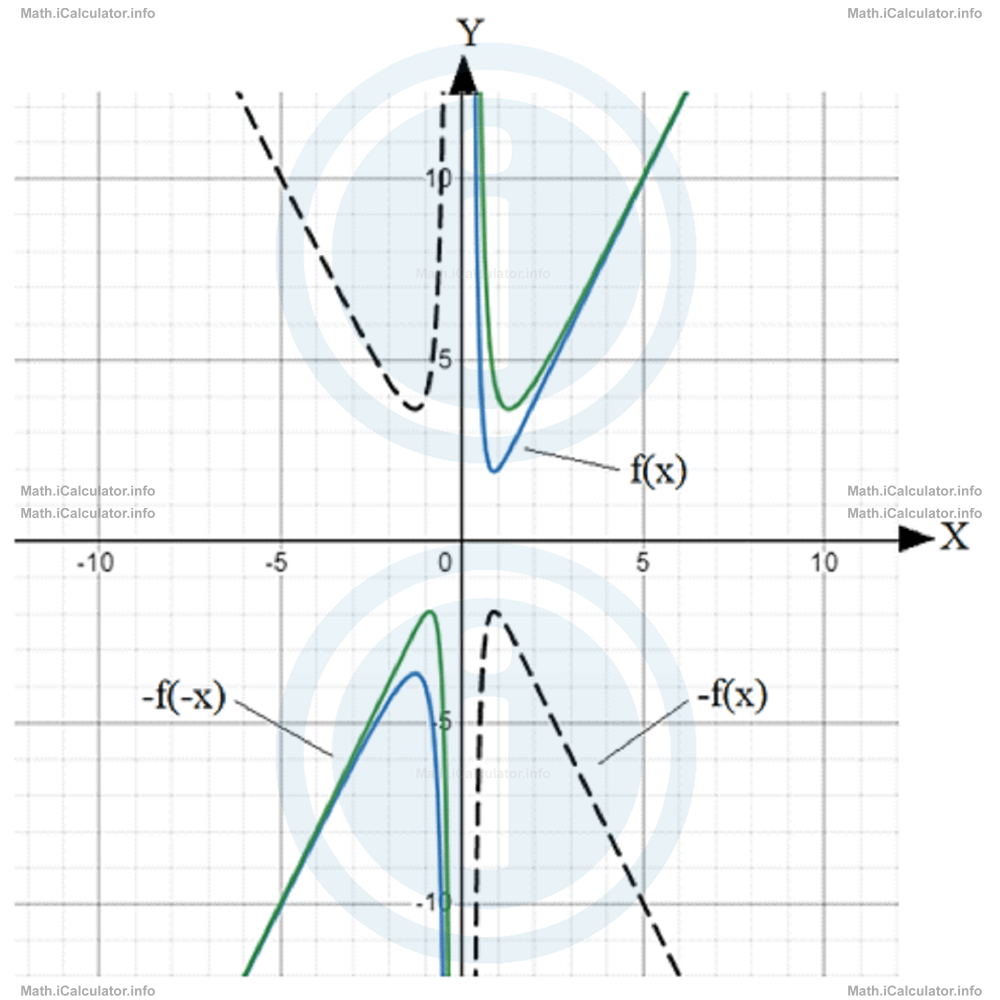
You have reached the end of Math lesson 15.7.3 Transforming Graphs using the Parent Function Graph: Reflections. There are 3 lessons in this physics tutorial covering Transforming Graphs, you can access all the lessons from this tutorial below.
More Transforming Graphs Lessons and Learning Resources
Whats next?
Enjoy the "Transforming Graphs using the Parent Function Graph: Reflections" math lesson? People who liked the "Transforming Graphs lesson found the following resources useful:
- Reflections Feedback. Helps other - Leave a rating for this reflections (see below)
- Types of Graphs Math tutorial: Transforming Graphs. Read the Transforming Graphs math tutorial and build your math knowledge of Types of Graphs
- Types of Graphs Revision Notes: Transforming Graphs. Print the notes so you can revise the key points covered in the math tutorial for Transforming Graphs
- Types of Graphs Practice Questions: Transforming Graphs. Test and improve your knowledge of Transforming Graphs with example questins and answers
- Check your calculations for Types of Graphs questions with our excellent Types of Graphs calculators which contain full equations and calculations clearly displayed line by line. See the Types of Graphs Calculators by iCalculator™ below.
- Continuing learning types of graphs - read our next math tutorial: Gradient of Curves
Help others Learning Math just like you
Please provide a rating, it takes seconds and helps us to keep this resource free for all to use
We hope you found this Math tutorial "Transforming Graphs" useful. If you did it would be great if you could spare the time to rate this math tutorial (simply click on the number of stars that match your assessment of this math learning aide) and/or share on social media, this helps us identify popular tutorials and calculators and expand our free learning resources to support our users around the world have free access to expand their knowledge of math and other disciplines.